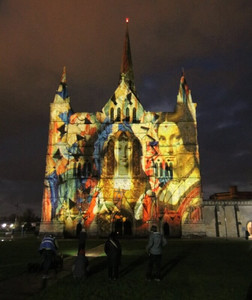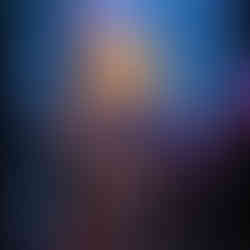Sarum Lights: Sound and Light Shows at Salisbury Cathedral
- Sarah
- Nov 9, 2022
- 5 min read
Updated: Jul 5, 2024
Salisbury Cathedral has an annual sound and light show, with both the inside and outside being used to create an immersive ‘Son et Lumiere’ experience, which fills the ancient medieval walls with sounds, lights and imagery. Created by Luxmuralis, a company which specialises in large scale installation artworks, it is a spectacular show which provides a whole new way of looking at the cathedral and usually takes place in the winter months.

Sarum Lights first debuted at Salisbury Cathedral in 2020, its walls filled with lights and music commissioned to celebrate 800 years since its founding. Visitors shuffled through in silent amazement, seeing the history of their city projected onto the medieval walls both inside and out, immersed in lights, colours and sound. The event proved to be a huge success and swiftly sold out.
A new annual event was born. 2021 saw Sarum Lights II: Heaven and Earth, and in 2022 the theme was Renaissance, that time in history which marks the transition between medieval and modernity, a time of great change in society, culture and politics, which was also characterised by a creative explosion in literature, architecture and of course, art.
Many will start their visit to Sarum Lights by watching the display on the west front, which starts with the slight scribble of an artist, rough painted lines which slowly transform into the stunning art of the Renaissance, snippets of which people may recognise. There are few complete works of art in the projection, it is mostly sections and parts of them which form a kaleidoscope of imagery through which the colours and faces of the era emerge - huge Renaissance eyes looking at you as they rise and fall over the west wall in a myriad of the rich reds, golds and blues of the art of that time.
It is all accompanied by a soundtrack of atmospheric music, what I thought of as 'Renaissance Chillout', as above you the clouds race across the night sky and the moon and stars occasionally make a fleeting appearance. The normally monotone and silent grounds of the cathedral close at night are transformed into something vibrant, illuminated and entrancing.
Inside the cathedral, the nave falls under a single image, emerging from the far end and growing in stature to encompass the whole area. It is most unusual to see the nave without any seating in it, just the font part way down, but the empty space is filled with colours, lights and images in abundance, many of them of maps, writing, and architectural plans highlighting the other cultural arts which were reborn during the Renaissance. The light bounces off the marble memorials, round the pillars and flashes off the recumbent tombs, focusing your attention on details that you may well miss on a normal day time visit.

The north and south transepts are also filled with imagery and standing at the crossing of the nave and the north and south transepts gives you a visual down each path where you feel truly immersed in the experience, with the different images, colours and sounds reaching a crescendo as they surround you entirely.
The Mona Lisa, da Vinci's Vitruvian Man and other iconic images flash to the sides of you, while in front is the huge kaleidoscope of colours, texts, drawings and patterns spreading across every surface.
I spoke to Peter Walker, the artist behind Luxmuralis, to find out more about the installation and what the thought processes were behind its creation. Peter is a sculptor and artist, a Fellow of the Royal Society of Arts, who has years of experience in large scale installations. He told me that the whole installation can take several months to put together, compiling the artwork and setting it to the musical compositions of the other creative half of Luxmuralis, David Harper, a composer who has worked in both film and theatre.
They curate the imagery of the show to suit the space it is being displayed in, as although the show is debuting in Salisbury Cathedral, it will soon tour around other venues in the UK. Peter explained that the pictures are carefully chosen, "I don't like things to be proscriptive but there is a message in there for people to find if they know the artworks. They are picked to lead into one another ... we are creating a new artwork with them. This type of artwork is the stained glass window of the time, a new way to take people around buildings like this. In a fast moving world it stimulates the brain in the same way stained glass windows used to, it's just in a contemporary way for the modern audience."

The Renaissance (French for re-birth) was selected as a theme as it replicates where Peter feels we need to be as a world culture - we need change and a rebirth of ideas. We need to think again and it is art, culture, science and religion which can drive this forward because we live in such a heavily commercial world. This sentiment is echoed by Revd Dr Kenneth Padley, the Canon Treasurer of Salisbury Cathedral. He told me that the Renaissance theme is very timely after the pandemic as just as in the 15th and 16th centuries, we need to celebrate life and to look at it anew. Churches are about breaking down the myth of science versus religion, "science is the language which God talks, and art is the creative expression of that."
The cathedral itself is integral to the experience. As Peter explained, "We have a strange fixed idea of faith, yet it is actually very complex. These buildings have seen hundreds of years of history, philosophy, thought and change and they are still a part of that. Putting artwork on the cathedral walls adds to that discourse." Revd Dr. Padley agrees, as Salisbury Cathedral has a strong association with art, particularly modern art, which goes back some decades, from the installation of the modern stained glass east window in the 1980s, to the recent exhibition of Grayson Perry tapestries which were displayed in the cathedral over the summer, the first time they were ever displayed in a religious setting. "Modern and contemporary art stretches people's thinking and can encompass the whole of the building. It tells a story using the big themes of creativity and modernity."

The display is not just about the cathedral but also the participants. Peter explained, "We often say one third of the installation is the building, one third is the art and then we need the public to come in and fill it in. Walking through the light; it goes on your body, your clothes, the people in front of you are immersed in it and you are really part of that."
There is no need to know anything about the Renaissance to enjoy the experience. Some of the visitors may enjoy spotting works of art they recognise, others will look at it just for the beauty of being immersed in the light and colour, an appreciation of being a part of the palette. Everything is on a loop so people can take as long as they want to just stand or to walk through it.
Visiting Sarum Lights is a unique and unforgettable experience. It takes place when the days are short and the nights are long, providing much needed light and vitality to an otherwise dark and gloomy time in the year. As the Rev Dr Padley said, "Sarum Lights works well as a prequel to the Christmas themes of light and darkness - it is a pivotal time of year with the winter solstice when the light declines and hope starts to grow. The cathedral is there to welcome people from the whole community."
The light shows take place in historical buildings around the UK, including such iconic places as the Tower of London and Winchester Cathedral. Find their updated schedule at Luxmuralis >>
My thanks to Peter Walker and Revd Dr. Kenneth Padley for talking to me about the installation.











Comments